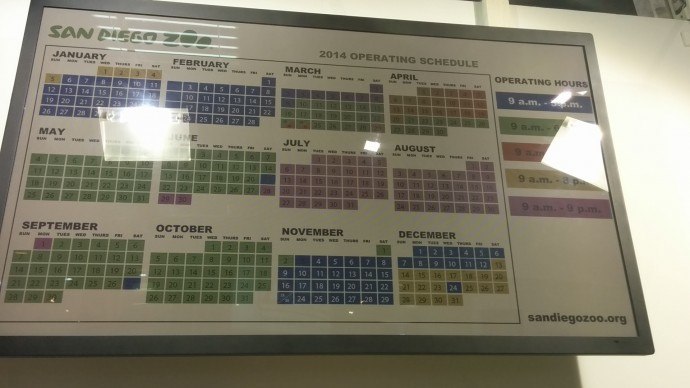
E Ink Says Digital Signage Could Become 10%-30% Of Its Business
July 1, 2014 by Dave Haynes

E Ink has some serious aspirations in the digital signage business, with a goal of digital posters representing as much as 30% of the company’s overall revenue within a few years.
That’s possible, the company says, because selling one 32-inch display equates to selling the substrates for about 25 e-readers.
I spoke at length Monday with Giovanni Mancini, the Boston-based Director of Product Management for E Ink, to get a rundown on the company’s very recent move into digital signage, and its longer term plans. The business unit is less than a year old. and the company hasn’t yet sold any units or even settled on firm pricing.
But … Mancini did say the price would be comparable, perhaps with a small premium, to the price of something like a Samsung, LG or NEC 32-inch LCD panel. So it won’t be crazy-expensive.
Detractors will say companies would be paying a lot of money for a display that doesn’t support video or smooth motion graphics or be color-accurate, unless you count black and white. Mancini says the benefits come primarly on the energy consumption side. The 32-inch E Ink panels I saw at Computex in Taipei only need power when the image is changed, and hold the current image on the display even without power. So energy consumption is at a bare minimum, and waaaay below what even the greenest LED-lit LCD panels can do. And there’s no heat or fan noise being generated.
One of the interesting aspects to these larger panels is that engineering allows larger pixels and therefore more light to drive images than a 7-inch e-reader. A knock on early E Ink displays was that if they had an added color filter, the colors that were produced were muted. On the 32-inch panels, wider pixels means the available colors are richer, though they still can’t accurately match brand identity colors, like, say, Coca-Cola red.
Mancini says their discussions with retail brands suggests they are OK with the color-matching limitations, and have sometimes raised an argument against LCD panels that I have near heard, but makes some sense. “A lot of retailers have told us they spend a lot of time and money developing the look and feel of their stores,” he explains. “They don’t want to put LCDs in their stores because the brightness of the display lighting would impact the look and feel of the brand.”
The more subtle, paper-like output of E Ink panels can more easily blend in to the store design, the argument goes.
Mancini says thinking of these units more like poster replacements than alternatives to LCDs is the better way to go. The display resolution is its own animal, at 2560 by 1440. The density of the image is like that of JPEGs, 94 dots per inch.
I asked why 32″ displays, and Mancini says that owes a lot to the advisory of E Ink’s largest current partner, the Italian firm GDS. It considers 32-inches a sweet spot for a lot of applications like mass transport and retail. There is no physical limit at 32. Mancini says the substrate is a laminate sheet that is a metre-wide and can be kilometres long in the production facility.
The company is looking at other sizes, and at the SID display nerd show recently in San Diego, it showed a 3 X 4 tiled display wall that joined a series of 16″ square E Ink panels. The capability is there to create much larger tiled displays with minimal seams.
E Ink is working on new displays that have much wider pixels to allow richer colors, and supporting lighting capability so that tiled E Ink displays could be energy-sipping alternatives to outdoor LED billboards.
Right now, the units are driven by external playback devices. E Ink, says Mancini, has no engineering plans to incorporate things like ARM microprocessors and embedded WiFi. That would be up to the partners, like GDS, who are building completed products that use E Ink.
This tech is more than a dozen years in development. It’s fascinating to see how its now maturing and showing the possibilities.
This is also an effort by E Ink to get beyond e-readers, a business that on the surface would appear to be booming for the company, but not one that’s making a lot of money.



Leave a comment